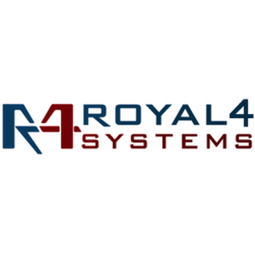Download PDF
Improving Warehouse Efficiency: A Case Study on Poiesz Supermarkets and WISE WMS Software
Technology Category
- Application Infrastructure & Middleware - Event-Driven Application
- Functional Applications - Warehouse Management Systems (WMS)
Applicable Industries
- Retail
- Transportation
Applicable Functions
- Logistics & Transportation
- Warehouse & Inventory Management
Use Cases
- Last Mile Delivery
- Transportation Simulation
Services
- System Integration
The Challenge
Poiesz Supermarkets, a family-owned business established in 1923, faced significant challenges in managing their logistics operations. With 69 supermarkets and over 5,000 employees, the company needed a robust and flexible system to manage their warehouse operations. The central warehouse in Sneek, which supplies all stores with 25 trucks, required a system that could handle inbound, outbound, and replenishment operations efficiently. The company also needed a system that could adapt quickly to new requirements, such as the registration of temperature upon receipt and other vital requirements. Furthermore, the company aimed to improve stock accuracy and control expiration dates upon receipt to minimize loss.
About The Customer
Poiesz Supermarkets is a family-owned business that was founded in 1923 in Sneek, in the north of the Netherlands. Over the years, the company has grown significantly and now operates 69 supermarkets across the country. The company employs over 5,000 people and manages a central warehouse in Sneek that supplies all its stores. The company prides itself on its high service level and has been using the WISE system for its logistics operations since 2008. The company's logistics departments, including inbound, outbound, and replenishment operations, all use the WISE system.
The Solution
Poiesz Supermarkets adopted the WISE Warehouse Management System (WMS) in 2008 to address these challenges. The WISE system proved to be a stable and flexible solution for the supermarket's distribution centers. It allowed for quick configuration to meet new requirements, such as the registration of temperature upon receipt. The WISE system greatly improved stock accuracy and helped control expiration dates upon receipt, resulting in less loss. All logistics employees were directed and guided by the WISE system, leading to a high service level with minimal errors. Additionally, Poiesz implemented voice technology throughout the picking process, with assignments prepared by WISE, further enhancing efficiency and productivity in the warehouse.
Operational Impact
Quantitative Benefit
Related Case Studies.

Case Study
Airport SCADA Systems Improve Service Levels
Modern airports are one of the busiest environments on Earth and rely on process automation equipment to ensure service operators achieve their KPIs. Increasingly airport SCADA systems are being used to control all aspects of the operation and associated facilities. This is because unplanned system downtime can cost dearly, both in terms of reduced revenues and the associated loss of customer satisfaction due to inevitable travel inconvenience and disruption.

Case Study
IoT-based Fleet Intelligence Innovation
Speed to market is precious for DRVR, a rapidly growing start-up company. With a business model dependent on reliable mobile data, managers were spending their lives trying to negotiate data roaming deals with mobile network operators in different countries. And, even then, service quality was a constant concern.

Case Study
Digitize Railway with Deutsche Bahn
To reduce maintenance costs and delay-causing failures for Deutsche Bahn. They need manual measurements by a position measurement system based on custom-made MEMS sensor clusters, which allow autonomous and continuous monitoring with wireless data transmission and long battery. They were looking for data pre-processing solution in the sensor and machine learning algorithms in the cloud so as to detect critical wear.

Case Study
Cold Chain Transportation and Refrigerated Fleet Management System
1) Create a digital connected transportation solution to retrofit cold chain trailers with real-time tracking and controls. 2) Prevent multi-million dollar losses due to theft or spoilage. 3) Deliver a digital chain-of-custody solution for door to door load monitoring and security. 4) Provide a trusted multi-fleet solution in a single application with granular data and access controls.

Case Study
Improving Production Line Efficiency with Ethernet Micro RTU Controller
Moxa was asked to provide a connectivity solution for one of the world's leading cosmetics companies. This multinational corporation, with retail presence in 130 countries, 23 global braches, and over 66,000 employees, sought to improve the efficiency of their production process by migrating from manual monitoring to an automatic productivity monitoring system. The production line was being monitored by ABB Real-TPI, a factory information system that offers data collection and analysis to improve plant efficiency. Due to software limitations, the customer needed an OPC server and a corresponding I/O solution to collect data from additional sensor devices for the Real-TPI system. The goal is to enable the factory information system to more thoroughly collect data from every corner of the production line. This will improve its ability to measure Overall Equipment Effectiveness (OEE) and translate into increased production efficiencies. System Requirements • Instant status updates while still consuming minimal bandwidth to relieve strain on limited factory networks • Interoperable with ABB Real-TPI • Small form factor appropriate for deployment where space is scarce • Remote software management and configuration to simplify operations






